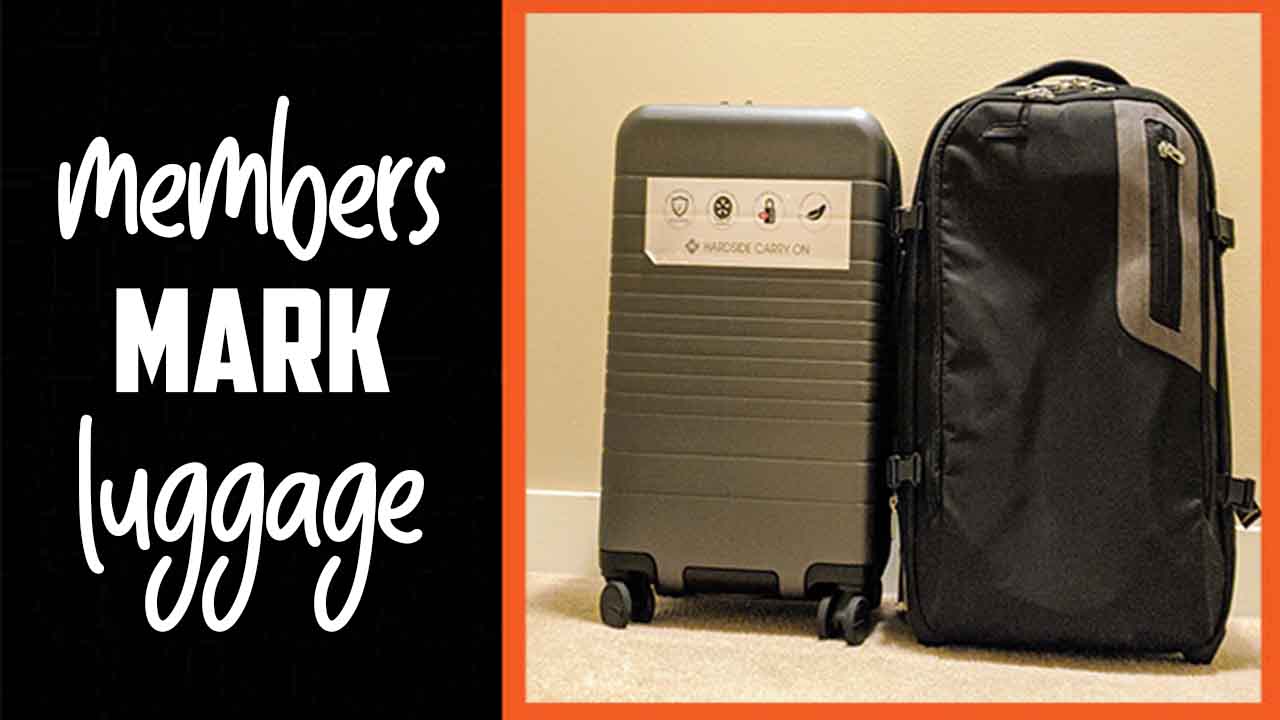Arches National Park safety is paramount for an enjoyable trip. Stay hydrated, protect yourself from the sun, be aware of your surroundings, and plan ahead to avoid common mistakes like underestimating heat or not carrying enough water. Following these essential tips ensures a memorable and safe adventure.
Visiting Arches National Park is an incredible experience. The towering sandstone fins and balanced rocks are truly breathtaking. But like any adventure in the great outdoors, it’s important to be prepared. Many visitors get so caught up in the wonder that they might overlook simple safety measures.
This can lead to discomfort, minor incidents, or even more serious issues. Don’t let that happen to you! With a little planning, Arches National Park can be both awe-inspiring and perfectly safe. We’ll walk you through everything you need to know, from what to pack to how to stay comfortable in the desert sun. Get ready for an unforgettable journey!
Your Essential Arches National Park Safety Checklist
Arches National Park is a place of stunning natural beauty, but its desert environment comes with unique challenges. Focusing on safety ensures you can fully immerse yourself in the landscape without worry. Let’s break down the key elements of a safe visit.
1. Hydration is Non-Negotiable
This is, without a doubt, the most critical safety tip for Arches National Park. The desert climate is incredibly dry, and temperatures can soar, especially during summer. Dehydration can sneak up on you quickly, leading to headaches, dizziness, fatigue, and in severe cases, heatstroke. It’s not just about drinking when you feel thirsty; it’s about proactive, consistent hydration.
How Much Water Do You Really Need?
A general rule of thumb is to drink at least one gallon (about 3.8 liters) of water per person per day. This is for a full day of moderate activity. If you plan on strenuous hiking or visiting during peak heat, you’ll need even more. Don’t rely on park facilities to refill; water sources are extremely limited, especially along trails. Always carry more water than you think you’ll need.
Tips for Staying Hydrated:
- Start hydrating before you arrive: Drink plenty of water in the days leading up to your visit.
- Carry a reusable water bottle or hydration pack: Make it easy to sip throughout the day.
- Set reminders to drink: Especially if you’re not a natural water drinker, a quick alarm can help.
- Electrolytes are your friend: Consider electrolyte powders or tablets to replenish salts lost through sweat. This is especially helpful on longer hikes or in extreme heat.
- Avoid sugary and caffeinated drinks: These can actually dehydrate you further. Stick to plain water.
2. Sun Protection: Your Shield Against the Desert Sun
The Utah sun is intense, and the desert offers little shade. Sunburn and heat exhaustion can quickly ruin your day, so proper sun protection is vital. Think of it as your personal desert armor!
Essential Sun Protection Gear:
- Broad-brimmed hat: A hat with a wide brim protects your face, neck, and ears.
- Sunscreen (SPF 30+): Apply generously and reapply every two hours, or more often if you’re sweating or swimming. Don’t forget to cover often-exposed areas like the tops of your feet and your ears.
- Sunglasses: Protect your eyes from UV rays. Look for sunglasses that offer 100% UV protection.
- Lightweight, long-sleeved clothing: This provides a physical barrier against the sun’s rays. Light colors are best as they reflect heat.
- Lip balm with SPF: Your lips can burn too!
Understanding UV Index:
The UV index measures the intensity of ultraviolet radiation. When in areas with a high UV index (common in Arches), taking stronger precautions is essential. You can check the UV forecast for Moab, Utah, before your trip and each day you are there.
3. Footwear and Trail Safety
The trails in Arches are often sandy, rocky, and uneven. Wearing the right footwear is crucial for comfort, stability, and preventing injuries like sprains or blisters. Proper footwear also provides better traction on slickrock.
Recommended Footwear:
- Sturdy hiking boots or trail shoes: These should offer good ankle support and have a grippy sole.
- Socks made of moisture-wicking material: Avoid cotton socks, which hold moisture and can lead to blisters. Wool or synthetic blends are ideal.
- Consider bringing moleskin or blister bandages: For any hot spots that might develop.
Trail Etiquette and Safety:
- Stay on marked trails: The desert ecosystem is fragile. Walking off-trail can damage vegetation and lead to erosion. It also increases your risk of getting lost or injured.
- Be aware of your footing: Uneven terrain, loose rocks, and slickrock can be hazardous. Watch where you step, especially when descending.
- Hike with a buddy: It’s always safer to explore with at least one other person.
- Tell someone your plans: Let a friend or family member know where you’re going and when you expect to be back.
- Know your limits: Don’t push yourself too hard, especially in the heat. Take breaks when needed.
4. Navigating the Park: Maps and Information
While the park is well-signed, having reliable navigation tools is a smart safety precaution. Cell reception can be spotty or non-existent in many areas of Arches National Park, so don’t rely solely on your phone’s GPS.
Navigation Tools:
- Park Map: Pick up a free park map at the entrance station or visitor center.
- Download Offline Maps: Before you go, download offline maps of the park on your smartphone using apps like Google Maps or AllTrails. Remember to ensure your phone is fully charged and consider carrying a portable power bank.
- Know the Key Landmarks: Familiarize yourself with the main roads, trailheads, and viewpoints shown on the map.
Visitor Center as a Resource:
The Arches Visitor Center is your first stop. Rangers can provide invaluable information on trail conditions, weather forecasts, ranger programs, and current park alerts. They can also help you plan your itinerary based on your fitness level and interests.
5. Wildlife Encounters in Arches
Arches is home to various desert creatures, from tiny lizards and busy ants to larger animals like mule deer, coyotes, and desert bighorn sheep. While most wildlife is shy and will avoid human contact, it’s important to know how to behave if you encounter them.
Wildlife Safety Guidelines:
- Observe from a distance: Never approach, feed, or touch any wild animal. Feeding wildlife can seriously harm their health and alter their natural behaviors.
- Store food properly: Keep your food secured in your vehicle or a bear-resistant container when not in use. This prevents animals from being attracted to your campsite or picnic area.
- Be aware of your surroundings: Especially when hiking at dawn or dusk, be mindful of where you place your hands and feet, as snakes and scorpions can be active.
- Know what to do if you see a snake: Most snakes in Arches are non-venomous, but it’s best to keep your distance and let them pass. If you encounter a venomous snake, calmly back away. Do not try to handle it.
6. Weather Preparedness: Beyond the Sun
While heat is a primary concern, Arches National Park can experience a variety of weather conditions. Being prepared for temperature swings and potential storms is crucial for your safety.
Understanding Desert Weather:
- Extreme Temperature Swings: Desert days can be scorching hot, but desert nights can get surprisingly cold, especially outside of summer. Pack layers.
- Monsoon Season (July-September): This period brings a higher risk of thunderstorms, heavy rain, flash floods, and lightning.
- Wind: Arches can be very windy, which can make it feel cooler but also pose risks like blowing dust and sand that can irritate eyes and lungs.
Preparing for Varied Weather:
- Check the forecast daily: Before heading out for any activity, check the latest weather report for Moab and the park. The National Weather Service is an excellent resource.
- Pack layers: Include a fleece jacket or sweatshirt, a windbreaker, and rain gear, even in summer.
- Be aware of flash flood potential: If you are hiking in canyons or washes during monsoon season, be aware of the weather upstream. If rain is falling or predicted heavily, abandon the canyon immediately. Flash floods can happen very quickly and are extremely dangerous.
- Lightning safety: If a thunderstorm approaches, seek shelter immediately. Avoid exposed ridges, peaks, and isolated tall objects like trees. The squat position can reduce your exposure if you are caught in the open.
7. Understanding Park Regulations and Closures
Arches National Park has rules in place to protect visitors and the natural resources. Staying informed about these regulations and any temporary closures can prevent misunderstandings and ensure a smooth visit.
Key Regulations to Note:
- Timed Entry Reservations: During peak season (typically April through October), Arches National Park requires visitors to obtain a timed entry permit in advance to enter the park during specified hours. Check the official NPS website for the most current information and booking procedures. Failure to secure a permit can mean you won’t be able to enter.
- Backcountry Permits: If you plan to camp in the park’s backcountry, you will need a permit.
- No Drone Usage: Drones are prohibited in all national parks for safety and privacy reasons.
- Leave No Trace Principles: Pack out everything you pack in, including trash. Respect wildlife, stay on trails, and minimize your impact.
Closures and Alerts:
Always check the park’s official website for current alerts, closures, and other important information before and during your visit. This includes trail closures due to maintenance, rockfall, or wildlife activity.
8. Common Mistakes to Avoid in Arches National Park
Many safety concerns arise from common visitor mistakes. By being aware of these, you can proactively avoid them and ensure a pleasant experience.
Top Mistakes and How to Avoid Them:
Here’s a quick look at what often goes wrong and how you can do things right:
| Common Mistake | How to Avoid It |
|---|---|
| Underestimating the heat: Trying to hike popular trails like Delicate Arch during the hottest part of the day. | Hike during the cooler parts of the day: early morning or late afternoon. Always check the weather forecast and carry ample water and sun protection. |
| Not carrying enough water: Thinking a small bottle will suffice for a few hours of hiking. | Bring at least one gallon of water per person per day. Electrolytes are a good addition for extreme heat. |
| Traveling without proper sun protection: Forgetting hats, sunscreen, or sunglasses. | Pack a wide-brimmed hat, SPF 30+ sunscreen, sunglasses, and lip balm with SPF. Wear light-colored, long-sleeved clothing. |
| Wearing inappropriate footwear: Opting for sandals, flip-flops, or old sneakers for desert hiking. | Wear sturdy hiking boots or trail shoes with good grip and ankle support. Pair with moisture-wicking socks. |
| Ignoring weather warnings: Deliberately entering canyons during monsoon season without checking the forecast. | Always check the weather and be aware of flash flood potential. If rain is imminent or occurring, evacuate canyons immediately. |
| Relying solely on cell phone service: Assuming GPS will always work. | Carry a physical park map and download offline maps for your phone. Know your route beforehand. |
| Feeding or approaching wildlife: Getting too close to animals for photos or to offer food. | Maintain a safe distance, never feed wild animals, and store food securely. |
| Not planning for crowds: Showing up during peak season without a timed entry permit. | Research and book your timed entry permit well in advance if required. Visit during the shoulder seasons if possible. |
9. Health and Personal Comfort Considerations
Beyond the immediate environmental risks, personal comfort is key to enjoying your visit. For some travelers, this might involve specific personal care needs.
Travel with Confidence:
Whether you’re planning a strenuous hike or a relaxed scenic drive, comfort is essential for every traveler. For individuals who require additional personal care or want to ensure extra comfort and security during long travel days, readily available solutions exist. Products like adult diapers, protective underwear, or absorbent pads can offer discretion and peace of mind, meaning you can focus on the captivating landscapes of Arches rather than potential discomfort. Packing these items can reduce stress, especially for longer journeys, car rides, or flights to the region. Always consider what makes you feel most secure and comfortable on your adventures.
10. First Aid and Emergency Preparedness
While we hope you never need it, having a basic understanding of first aid and knowing what to do in an emergency is essential for any outdoor adventure.
What to Pack in Your First-Aid Kit:
- Assorted bandages and gauze pads
- Adhesive tape
- Antiseptic wipes
- Pain relievers (like ibuprofen or acetaminophen)
- Antihistamines for allergic reactions
- Any personal medications
- Moleskin or blister treatment
- Tweezers for splinters
- Hand sanitizer
Emergency Procedures:
If you encounter a medical emergency or witness one:
- Assess the situation: Ensure your own safety before approaching the person in need.
- Call for help: Dial 911. Provide your exact location, the nature of the emergency, and the number of people involved. Cell service is unreliable, so know that in many cases, park rangers will only be dispatched if they are relatively close by.
- Administer basic first aid: Depending on your training and the situation, provide care until professional help arrives.
- Stay calm: Your calm demeanor can help the injured person.
Remember, park rangers are trained to handle emergencies. Your primary role is to get them the information they need quickly and safely.
Frequently Asked Questions
Q1: What is the biggest danger in Arches National Park?
A1: The biggest dangers are often related to the desert environment: dehydration, heat exhaustion, and heatstroke due to extreme temperatures and lack of shade. Flash floods during monsoon season and lightning strikes are also significant risks. It’s crucial to manage hydration and sun exposure and to be aware of weather conditions.
Q2: Do I need to make a reservation to enter Arches National Park?
A2: Yes, Arches National Park generally requires a timed entry reservation during its peak season (typically April 1 through October 31). You must book this permit in advance online. Always check the official NPS website for the most up-to-date information on reservation requirements and to purchase your permit.
Q3: Is Arches National Park safe for solo travelers?
A3: Arches National Park can be safe for solo travelers, but it is essential to take extra precautions. Always let someone know your itinerary, stick to well-trafficked trails during daylight hours, carry more water than you think you’ll need, and be aware of your surroundings. Hiking with a buddy is always recommended for increased safety.
Q4: What should I wear to be comfortable and safe in Arches?
A4: Wear light-colored, loose-fitting clothing that covers your skin to protect from the sun and heat. A wide-brimmed hat, sunglasses, and closed-toe hiking shoes or boots with good traction are essential. Pack layers for cooler mornings and evenings.







